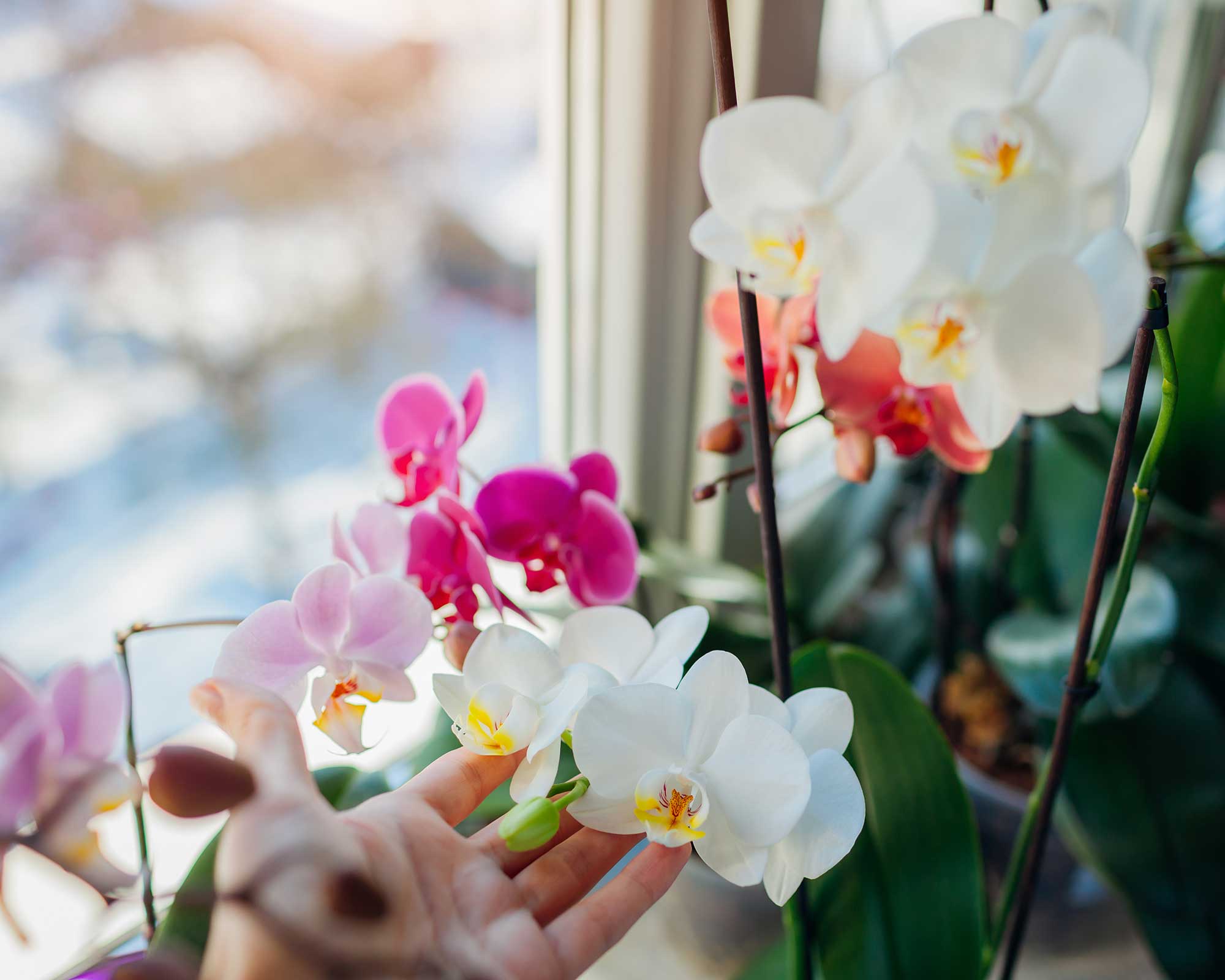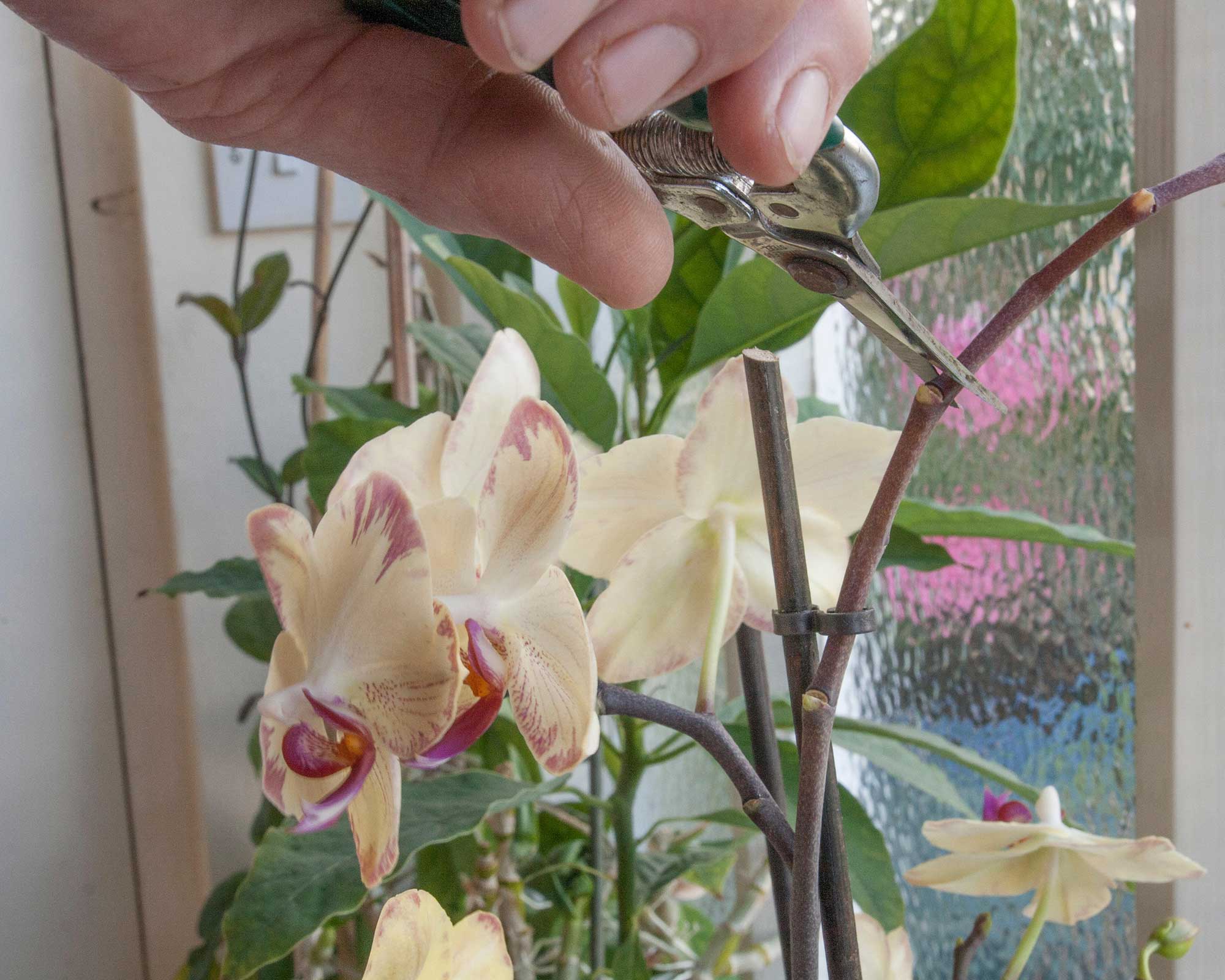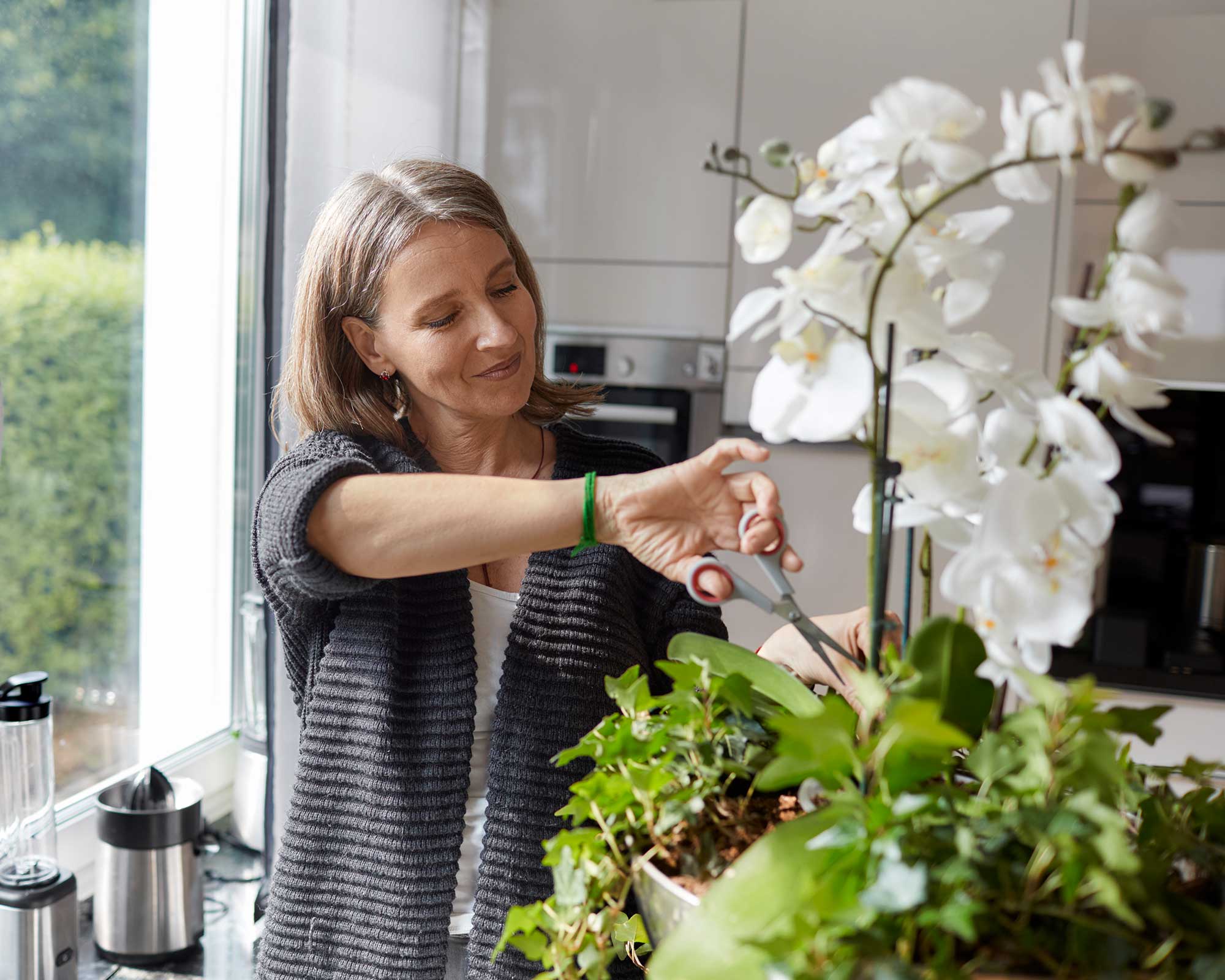How to prune orchids in 5 simple steps
Our tips for how to prune orchids will encourage your treasured plants to keep blooming for as long as possible


Learning how to prune orchids will enable your plant to produce plenty of blooms next season. If you're lucky, you might even have a second bloom!
Pruning orchids is also a good idea because you can take stock of the plant's condition, and trim back any diseased matter so it won't affect the orchid's development later on.
When it comes to orchid care, there are different pruning regimens for different orchid varieties, but most will adhere to the steps we've outlined below.
Jo Lambell, founder of Beards and Daisies, comments, 'Orchids are up there as one of the most beautiful plants around, but they have a little bit of a reputation for being tricky to look after. To get the best out of yours and ensure your plant continues to bloom, pruning is an essential part of its care.'
'Orchids need pruning to keep them healthy; it fends off disease and gives you the chance to look for any pests or problems. It also encourages regrowth, so it’s well worth doing.'

Regular pruning will encourage new orchid blooms
Follow this easy method for how to prune orchids
You can do some minor pruning while the orchid is still in bloom, by cutting back any fading flowers to the main branch. This will keep the plant healthy and happy and ensure it remains one of your best indoor plants.
After the orchid has finished blooming (which you can confirm by all the flowers fading, and hopefully dropping off too), you can go a step further, and follow the major steps for how to prune orchids, as detailed below.
- Clean and sterilize your best secateurs to make the cleanest cut on your orchid stem.
- Orchids only like being pruned when they're in a healthy state, as that's when they'll have enough energy to produce new flowers. Before pruning, check the base leaves. If they're green and glossy then you can prune, but any limp, dry or yellow orchid leaves mean you should wait a while until the plant is healthier.
- Now it's time to trim the stem that has bloomed. If the stem has turned brown and withered you can snip it right back to the level of the soil. This is a spent stem and won't bloom again, so it doesn't need pruning. Removing a withered stem also helps to redirect energy towards developing stronger roots.
- Check for nodes and dormant eyes. Nodes on orchids appear as thin brown lines running circular around the stem. Any little brown spikes on the nodes (the 'eyes') might grow into a new stem, so it's worth keeping them intact.
- To do this, prune approximately a half inch above these nodes by cutting straight across the stem. It's an important measurement, as cutting either too close or too far from the node can affect how the plant next flowers.

Cut cleanly across the stem a half inch above the nodes
Now your pruning is done, keep an eye out for new flowers. They should appear within around 6 to 12 weeks. If you don't see any new growth, you can try lowering the temperature which might stimulate the plant to grow: around 55-65˚F (13-18˚C) at night should be sufficient.
When should orchids be pruned?
Orchids don't need to be pruned particularly often, and usually only once the flowers have bloomed and faded.
It's important to pay attention to the seasons, too. Jo Lambell reminds us, 'Orchids go dormant in fall/winter and drop their flowers, so it’s not unusual to think that you’ve killed your plant. Pruning can help when trying to get your plant to bloom multiple times in growing season.'
'Once you understand the ebb and flow of the orchid’s cycle, you’ve cracked orchid parenthood!'
It's also worth knowing how to repot an orchid, as this will help to ensure it continues to bloom for years to come.


Freelance writer and author Flora Baker is a keen amateur gardener and houseplant enthusiast. Her small garden in South London is a constant work in progress as she gets to grips with snail prevention, DIY trellises and what to plant in shady spots overrun with ivy.
